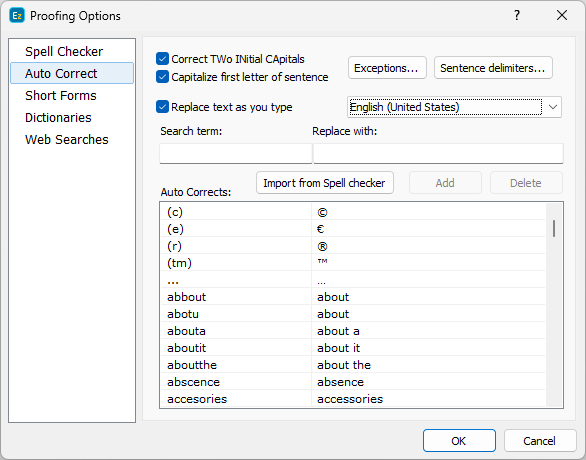Auto Correct as the name suggests is a feature which fixes common typos and misspelled words as you type.
It is switched on by default and the lists of words are automatically imported from the spell checker application (MS Word, OpenOffice or LibreOffice) so there are no actions required to configure or activate it.
However, if you want to switch it off or make changes in the auto correct list you can use Tools/Proofing... menu:

Auto Correct
There are different auto correct lists for every language used and it is important to choose the appropriate language first.
You can easily add entries to the Auto Correct by first typing the misspelled word in the Search Item box, then fill in its correct spelling to the right in Replace With box and finally press the Add Button.
If you wish certain word always to appear italicized after typing it, you can use the <i> parameter, for example:
Search term:always
Replace with:<i>always.
As easily as inserting new entries you can delete already existing one, by first finding it in the list and then pressing the Delete button.
If you want to reset the list you can use Import from Spell Checker button. This will read the auto correct list for the selected language from the spell checker application again. Please be aware that any changes you have made will be lost.
In addition to the regular function of the auto-correct EZTitles provides a few other:
Correct TWo INitial capitals - automatically corrects words starting in two capital letters.
Capitalize first letter of sentence - automatically capitalizes the first letter of a new sentence. Sentence is identified by one of the punctuation marks: full stop, exclamation mark or question mark, every letter that follows one of them will be considered as part of a new sentence and will be capitalized in return.
Sentence Delimiters - allows you enter, or respectively remove, punctuation marks which must be followed by a capital letter. This can be required in a number of situations, but especially if direct speech is preceded by a descriptive text, for example: "Jean: - Hello everybody!".